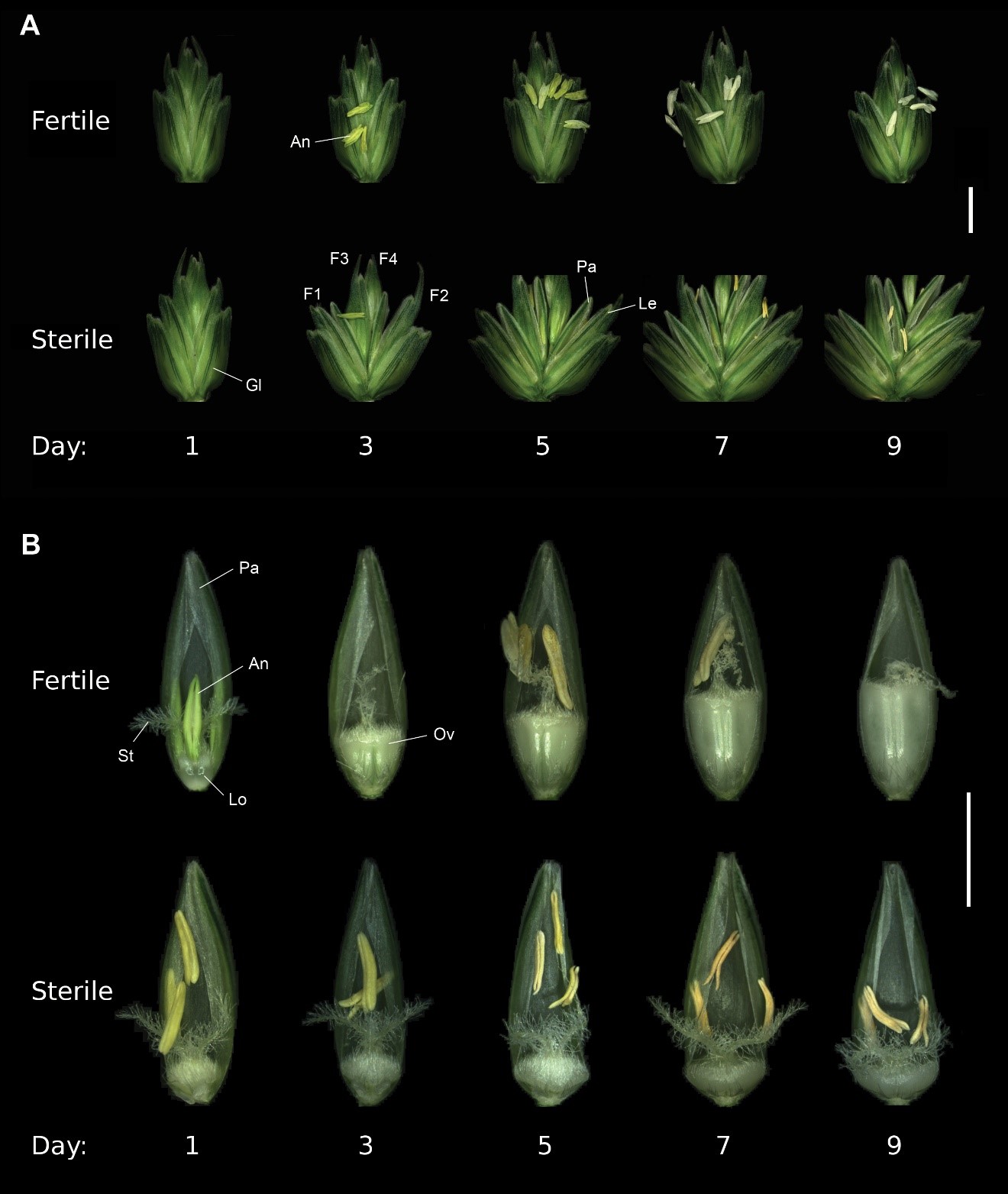Many environmental conditions can cause pollination problems in wheat, such as freeze damage, drought, or heat stress. This year, the most concerning factor as it relates to a potential for unsuccessful pollination is heat stress, in particular that experienced during May 9-12 (for more details, please see accompanying eUpdate article).
About 4 to 5 days after flowering, producers can begin checking their fields to see if their wheat successfully pollinated.
To check for successful pollination, producers can collect some heads from the field, pull the flower parts back and look to see if there is a small developing wheat kernel in the ovary (Figure 1). If there is, fertilization was successful.
Because different tillers go through development in slightly different timings, and kernels in the middle section of the head initiate pollination before those at the top and bottom of the head, heat stress is context-specific. It may damage kernel fertility in various tillers or spikelets within a head differently depending on the susceptibility of the particular stage of pollination during the heat event. Thus, growers are encouraged to check for kernel development in as many tillers and portions of the head within a tiller as possible.

Figure 1. Floret images of male-fertile (upper row) and male-sterile (lower row) plants during flowering time and early seed development with days counted from full heading. Abbreviations: An, anther; Lo, lodicule; Pa, palea; Ov, ovary; St, stigma. Scale bar is 2 mm. Photo adapted from Okada et al (2017), available at: https://academic.oup.com/jxb/article/69/3/399/4676045
If normal self-fertilization was unsuccessful, the florets will flare open. These flowers can still be cross-pollinated by nearby wheat plants with viable pollen, but the odds of that occurring are low.
Romulo Lollato, Extension Wheat and Forage Specialist
Tags: wheat pollination